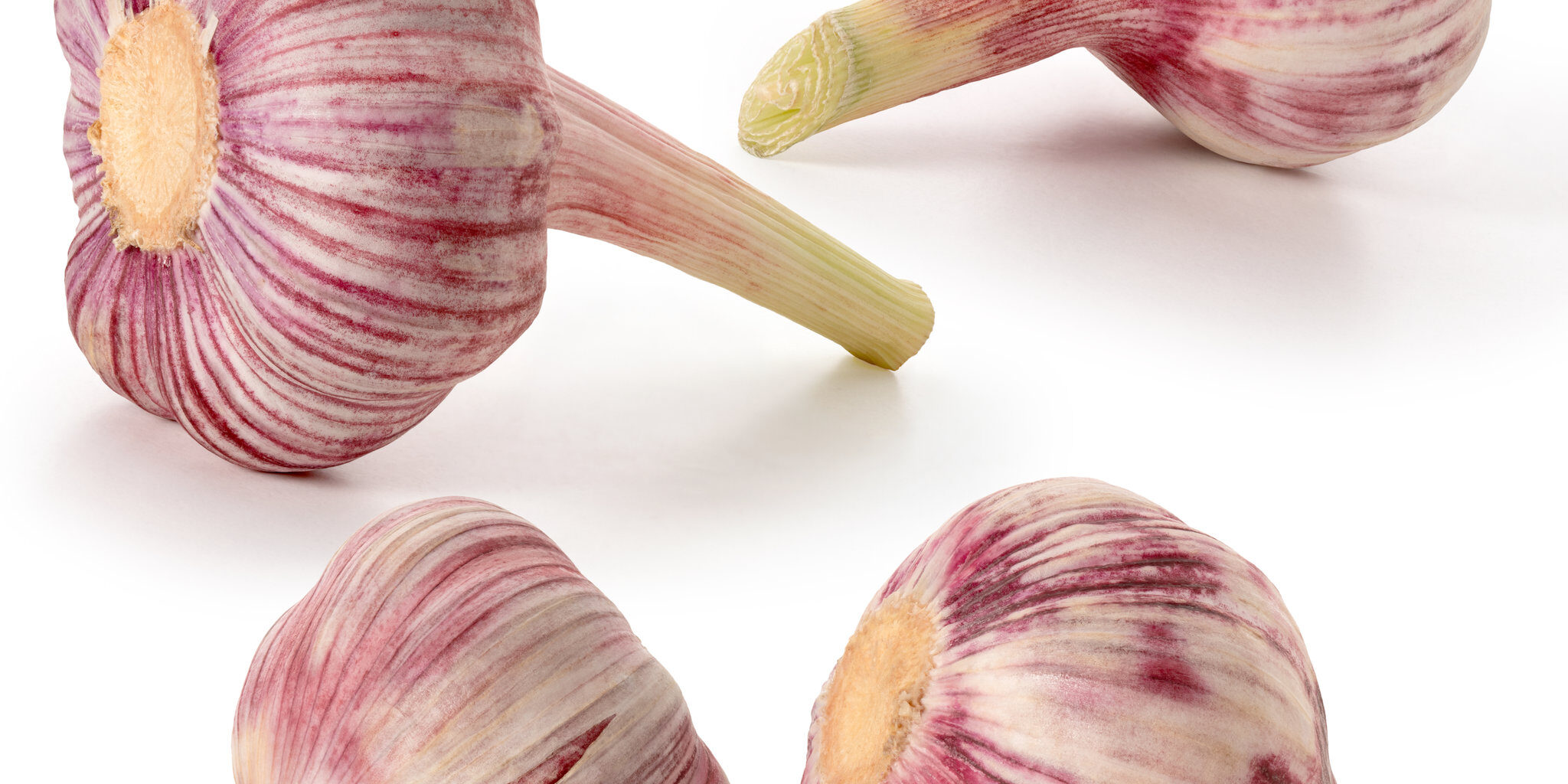A little package with great big flavor
Every time I cook, I learn something new. Early on in my cooking career I would carefully peel the husk from garlic cloves, which would take lots of time. Since I love garlic and when a dish called for multiple cloves, it seemed I spent an inordinate amount of time carefully removing the husks. Then I watched Jacque Pepin and the fascinating way he removed the husks from garlic cloves. Chef Pepin is amazing in his knife skills. He is able to paste a garlic clove so quickly it keeps me spellbound each time I see this process. However, I don’t count myself expert enough to be able to copy his technique. If I can chop the garlic finely, it is enough for me.
Place the garlic head a bit of an angle and whack it with your palm. This should separate the cloves. Remove the extra husks and coating and separate out the cloves. Cut the bottom part of the clove off. Then place the clove on the cutting board, take the flat of a knife and lay it on top of the clove. Whack the knife with the palm of your hand, then you just remove the husk without problem. The knife should be wide enough that you don’t risk cutting yourself with a missed “whack”. Nothing fancy, a fairly simple approach. The unhusked garlic clove can now be minced, chopped or put in a garlic press. If you want garlic slices, this requires you to carefully remove the husks and then slicing the cloves, using the “old” husk removal approach. But needing sliced garlic is not a common occurrence for me. Each garlic head will include anywhere from 10-20 cloves. Smaller cloves are fine, they just take more time to de-husk.
Garlic changes with how it is prepared or cooked. Baked and roasted garlic has a wonderful yet more mild flavor than raw garlic. How you chop up raw garlic effects the strength of that ingredient. Minced or pasted garlic is much stronger than roughly chopped or whole cloves. Fermented or black garlic, has an altogether different taste.
One needs to be carefully in purchasing garlic:
Observe the bulb. Look carefully for blemishes, rot or other indications of poor quality. Brown spots on garlic cloves need to be removed. Although some suggest discarding the clove entirely, small brown spots can be removed and the clove still used. Obviously larger spots would require discarding the entire clove. Green sprouts are frequently discussed and the opinions range from discarding such a clove, removing the sprout, or just using the clove. A clove that has sprouted will have a stronger garlic taste, but there is no reason not to use such a clove as you would any garlic clove. If it is fully sprouted, these need to be discarded, or just used in a salad.
Smell the garlic bulb. If the bulb smells rotten or fermented, discard or ignore this bulb. I find that most of the garlic bulbs I purchase have little to no smell. If there is a smell it tends to be a light garlic smell. If you smell a strong garlic smell, many recommend not purchasing this bulb, a recommendation that I use when purchasing garlic. If a garlic bulb has been damaged, Allicin is released from the damaged cells and this is responsible for the garlic smell. So this strong smell can indicate damage to the bulb.
Feel the bulb. There should be no mushy parts, but firm cloves throughout. If mushy do not purchase or discard.
Garlic should be kept in a dark fairly cool place, not the refrigerator. Placing a bowl with your garlic in the cupboard is a good option. Don’t keep the bulbs in plastic bags, just an open bowl works fine. Garlic should keep for weeks in this type of environment. As soon as the garlic bulb is broken open, its shelf life diminishes. So the cloves should be used in 3-4 weeks once this is done. Minced garlic will keep in the refrigerator for a week or so, but I prefer to use what I mince and to mince what I need.
The use of garlic has been recorded back as far as the Egyptian cultures.
Garlic is very nutritious. For example one clove contains 2% of the daily recommended amount of manganese and vitamin B6. Studies have found that garlic can increase the immune system and reduce the common cold. Garlic may also affect blood pressure and help with hypertension control. Garlic may also lower cholesterol, doing so by lowering the bad cholesterol, LDL. The antioxidants in garlic may reduce the incidence and progression of Alzheimer’s dementia. In general garlic may actually increase life span. All of these claims are not without controversy, and the studies done to show these positive health benefits have been criticized. Regardless, garlic is a wonderful ingredient, and I go through about a head per week, at least. There is even garlic ice cream, which I plan on making one of these days.








